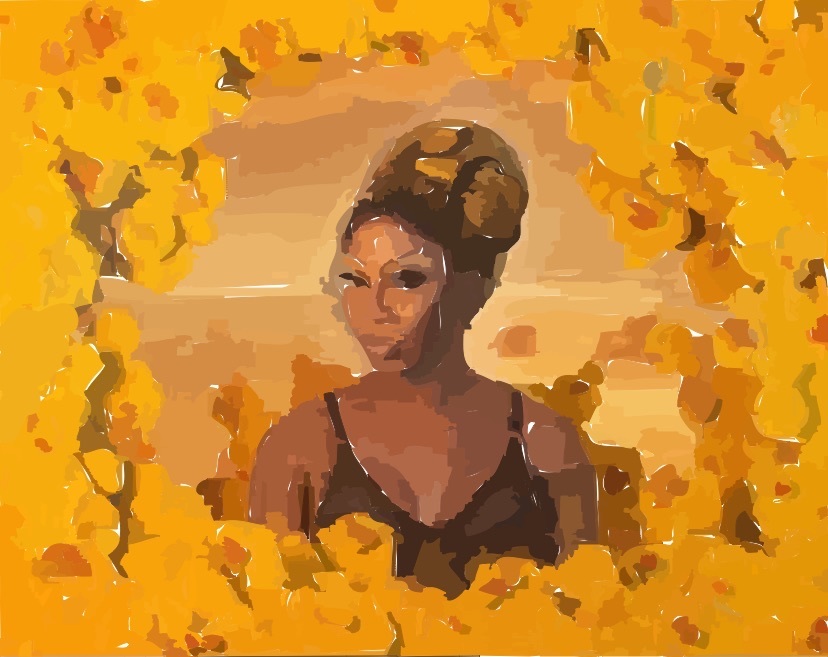New York drag queens share struggles and successes of online performance
Drag queens speak on the drastic changes that New York City’s drag culture experienced during the pandemic.
When the pandemic hit, the drag culture was hit just as hard. Many queens, such as Honey Davenport, turned to the internet and social media, attempting to translate the extravagance of a live performance to a camera. (Staff Illustration by Arnav Binaykia)
May 6, 2021
Drag is a performance of gender expression, most commonly seen when someone performs femininity, or personifies a female character, as a drag queen. Regardless of gender identity, anyone can participate in drag. It is a way of being someone you’ve always wanted to be. Drag is an all-encompassing art form that requires mastery of makeup, dancing, lip-syncing, fashion, comedy and so much more.
“[Being] an artist is to be creative and to push so much creation out,” New York City-based drag queen Ruby Fox said. “To come up with concepts or to really feel something or emote something through your work, you have to have life experience.”
Usually, drag is entirely dependent on live performance. When the pandemic hit, the culture was hit just as hard. Many queens turned to the internet and social media, attempting to translate the extravagance of a live performance (which often features stunts like flips, splits and voguing) to a camera. Whether it be through TikTok, Twitch, YouTube or Instagram, queens had no choice but to adapt. Prominent drag queen Honey Davenport, who was featured in season 11 of “RuPaul’s Drag Race,” discussed the challenges of transitioning to online performances.
“I am done, I am spent, y’all got me on Instagram, Reels, TikTok, all the things, and this is a whole lot,” Davenport said. “To expect one person to run Instagram, Tiktok, Twitter, Twitch, all the things, it’s too much. Kudos to every little Gen-Z-whatever who’s able to do it on their own. Please show me how to be as strong as you one day; they must’ve hid some secrets in your mom jeans.”
After speaking with Peppermint, the first openly trans woman to compete on “Rupaul’s Drag Race,” it became clear that drag culture had been devastated by the pandemic. Many queens had to move out of the city after losing their careers and their main source of income. She feels fortunate to have been able to diversify her career prior to the pandemic by working in film and television, a field that remained relatively active. However, Peppermint, like everyone, had her appearances turn virtual and with that, came a lot of changes.
“I’ve got seven tripods currently sitting in my living room and they remain. I have four devices that can receive a signal, five screens, three microphones, four lights, four backdrops, seamless paper in my window, a black curtain and a silver sequin curtain that I can pull across,” Peppermint said. “This is not a living room anymore.”
While isolation was being tough on all the queens, it brought new insights into their lives. With the sudden shift away from live performances, all the queens came out of this pandemic with something new.
For Ruby Fox, the pandemic brought her a newfound solidarity within the community, as she was able to connect with queens from around the country through virtual shows. In a way that she previously would not have been able to.
“This pandemic has been something that has offered reflection into what I do, who I am and how in the future, I am going to pursue my career,” Ruby Fox said. “The queens who really survived who really kind of made a name for themselves were the girls who were self-sufficient.”
Davenport delved more into her directorial side, by directing notable music videos with other prominent Drag performers like Aja, Shuga Cain and Maxi Glamour. She also created the “full fantasy” of herself via production, generating the most passionate piece of music she’s made in her 14-year musical career: a visual EP called “Love is God.”
“I never wanted to do this from my living room, Davenport said. “But I will say, I learned more this year than any of the fourteen years that I’ve been doing drag. When we were put into lockdown, I couldn’t stop creating or I wouldn’t be able to pay my bills. I dreamed bigger than I ever had before because I was sitting in this house with nothing to do but dream.”
2020 brought along an awakening for many. This also led to new opportunities for Peppermint used her time to gain more opportunities as a speaker on issues of diversity and race.
“Because of quarantine, there were so many conversations that I don’t think we would have been able to have had if we hadn’t been captive in our own houses,” Peppermint said. “A lot of people were more engaged in a bit of activism than they would have been otherwise. More people felt compelled to speak out on those issues online if anything, in addition to going to marches and rallies.”
All of the queens provided an interesting insight into both the multifaceted approach it takes to be a drag queen, and have shown why drag, as an artform, cannot be easily mastered. The COVID-19 pandemic brought a lot of despair, but also a lot of transformation. With vaccinations and a return to normalcy on the horizon, things are looking up in the drag world as performers and fans alike prepare for a return to live performances.
Email Valentina Arrieta at [email protected]



























































































































































